Genre: Sports Developer: Extended Play Productions Publisher: Electronic Arts Players: 1-4 Released: 1993
FIFA International Soccer, the game that birthed the juggernaut of EA’s FIFA Soccer series, was first released for the Sega Genesis, precisely on July 15, 1993. That means that by the time this review goes live, the game that jump-started the most successful soccer franchise in video game history, with almost 50(!) different installments to its name – the latest currently being 2014 FIFA World Cup Brazil, and FIFA 15 already primed to launch this fall season – is turning 21. Soon, there will be legal adults playing some iteration of this series who weren’t even born when the inaugural game was launched.
Nowadays, the FIFA series is pretty much the top dog when it comes to soccer simulations. Aside from the occasional entry in Konami’s Pro Evolution Soccer series, no other football simulation can hold a candle to the quality of these games. For that reason, it’s easy to forget how huge of an impact FIFA International Soccer made when it arrived smack-dab in the middle of the 16-bit era. While Konami and EA are today virtually the only producers of soccer games worth talking about, the video gaming landscape of the mid-’90s was practically littered with soccer games. There were your Kick-Offs and your International Soccers. You had Sega Soccer, Tecmo Soccer, Sensible Soccer, and Ultimate Soccer. Moreover, for each World Cup a different developer created an official tie-in game. For example, the official game to the 1994 World Cup in the U.S. was not handled by EA but by U.S. Gold (a British company, ironically enough). It wasn’t until 1996 that Electronic Arts got its hand on the official World Cup license, mainly due to the success of this very game, and they haven’t let go of it since.
So clearly, FIFA International Soccer was a major game-changer when it hit the scene in the summer of ’93 on the Genesis (and other platforms the year after). Still, many gamers, me included, consider the original entry to be not only rather dated but to also have aged rather badly. If that’s the case though, then why did it see such a critical acclaim in its day, and what did it do different than the dozens of other soccer games that came before in the first place?
The most obvious different aspect to other titles of its era is the perspective. Up until EA’s FIFA series came along, most soccer games (outside a few exceptions) opted for either a simple top-down point of view or looked at the pitch from the side with a lightly heightened angle. The direction of the play was also determined by that. You either played from top to bottom or from left to right in most games. FIFA International Soccer decided to eschew both options. Instead, the developers opted for an isometric view of the pitch. The direction of play went towards the top-right or lower-left bottoms of the corner. Giving an angle to the actual perspective itself made a huge difference. Suddenly, there was a certain depth to the playing field. When a ball went high and wide, you could actually discern that by its relative position on the pitch. This was supplemented by a relatively good eight-way control scheme that allowed you to make short, precise passes both into the screen, as well as along the sidelines. It may not have played as fast as other, more action-oriented soccer games of its time, but it did play enjoyably tightly. While this was new in 1993, it didn’t take long for other developers to immediately copy that idea and include that perspective in their takes on the soccer genre as well from that point onward, as was the case with Head-On Soccer, Total Football, or both Pelé games made by Accolade.
FIFA Soccer didn’t play as fast as some of the soccer games that came before. That’s because FIFA International Soccer successfully attempt to simulate the soccer experience as a whole, while most video game versions of the ball sport tried instead to concentrate on an action-oriented arcade experience, focusing on the fast-paced potential rather than some of the more strategic aspects. This goes beyond the actual gameplay itself. In FIFA International Soccer, the team management was more important than in most other games. Sure, most games urged you to pick your team’s starting formation. Some even allowed for marginal roster changes or substitutions, which usually came into play to avoid having a player with a yellow card getting booked completely or, in some rare instances, allowing to swap out an injured player. FIFA International Soccer had all that and went even further. For example, individual players did not only possess an overall rating but also varying statistics in terms of endurance, passing accuracy, shooting strength and many more. These ratings weren’t there for show either. You could notice a player getting weaker as a game dragged on, or a substitute kicking the ball stronger and with more vigor than his swapped-out teammate.
Furthermore, in addition to the ability to determine your team’s formation, you could also handle the active team coverage of defense, midfield or attackers, and its general strategy. Do you want to play more defensively, or do you want all of your players to storm forward recklessly for an all-out attack? Needless to say, all this suddenly made a soccer simulation well more tactical than you’d ever seen before. Whereas in older games you usually just tried to push forward in order to score as often as possible, here you suddenly had an incentive to, let’s say, try to put up an all-out defense in order to get this one goal advantage safely over time. The game gave you the mechanics to support these tactics.
It also helped a bunch that the game looked pretty good for its time. Player sprites were pretty big and owned a nice range of tricks and animations. Flying headers, bicycle kicks, sliding tackles, heel kicks, and volleys were rather easy to pull of and fit relatively smoothly into the game. Gameflow did tend to get a bit jerky at times though, and a powerful kick could result in the ball suddenly outrunning the screen. Despite this, and given the freshness of the perspective and the overall more authentic gameplay experience, it was easy to overlook these hiccups. What also contributed to that authenticity was the sound. A chanting, cheering audience and powerful bumping and kicking sounds created a stadium vibe that other games rarely matched aurally. FIFA International Soccer was just wonderful for any soccer fan to listen to. There were also the little touches enhancing the experience, such as the animation of the referee running up to the offending player after a foul and pulling out a yellow card.
All this was nicely put together and joined into a game that, at the time, resulted in the most authentic soccer experience to date. Another contributing factor for the popularity of the game was its four-player mode. Sure, there had been other soccer games allowing for more than two players before, but here the multi-player option worked charmingly well. I remember many an afternoon where I had met up with friends (ironically enough usually after soccer practice), and we recreated our private world cup tournaments against one another, either solo or in competing teams. This was something I hadn’t done before to that degree with other soccer games.
So if I’m heaping all that praise onto the game, why do I say it aged badly? Why doesn’t it get a much higher rating? Well, the reasons are two, technically even threefold. For one thing, there are still a couple of flaws that, in the long run, were detrimental to the gameplay. The computer A.I. wasn’t all that sharp. Players tended to run around rather aimlessly and without a certain recognizable scoring strategy, making it rather easy to intercept attacks even against technically stronger teams. Secondly, shots from a sharp angle could zoom so fast across the screen that it seemed like the ball had teleported to the other side. Also, blindly kicking the ball about from around midfield results more often in an accidental goal than you’d expect. Additionally, in the first round of the playoffs you might encounter one of the teams you had already faced in the group stage. That your tournament progress is only saved by a ridiculously long password system is also a bit of a sour note. And there was the infamous goalie block. If you positioned a player right whenever the opposing goalie was trying to kick the ball, you had a very good chance of immediately intercepting it and scoring an assured goal.
Later games in the series did eliminate this issue outright and also improved on virtually everything else. For example, the inaugural FIFA International Soccer had only 49 national selections, and no licensed players. It also only allowed for exhibition matches, a league of eight mostly random teams and a simulated world cup tournament (optionally with or without group stage). Just one year later, we got the Genesis-exclusive FIFA Soccer ’95 sporting not just national selections, but also many club teams on different national levels, new tournaments, several and bigger league modes, better A.I., sharper graphics, tighter gameplay, and an overall better experience on almost every conceivable level. Furthermore, after the inaugural success there were four more FIFA games released on the Genesis alone, each one playing better than the last, and most of them at least tweaking the game and improving the experience at least in some fashion. So whether it was intentional or not, EA itself did its best to outdate the original with its updated installments. The ’95 and ’96 editions of the game probably still stand out the most when looking at the 16-bit FIFA games.
Last but not least, when it comes to a simulated, authentic soccer experience, the genre has simply evolved way too much by now. Looking back 21 years, the level of realism the 16-bit era was able to come up with simply can’t hold a candle to modern-day standards. And on the other end of the soccer spectrum, FIFA International Soccer isn’t able to offer the action-packed pace of more arcade-oriented titles released in the day. Games with simpler gameplay and faster tempo like, for example, Sensible Soccer or ISS Deluxe were and still are easier to get into and manage to retain a fresher experience and more fun-oriented appeal, while the outdated simulation style of the older FIFA games just couldn’t help but get a bit stale after all these years.
There’s no denying the fact that FIFA International Soccer permanently changed the soccer gaming landscape. When it was released, its level of authenticity was simply unmatched at the time. It set new standards in terms of strategic depth and audiovisual atmosphere. But looking back 21 years, the gameplay now feels rather slow and inaccurate when compared to some of the simpler, more action-packed games. The inaugural entry to the series contains a couple of shortcomings and a rather weak A.I. that at the time of release could easily be forgiven, but since they were fixed in later installments, these flaws just become all the more apparent by comparison nowadays. And when it comes to authenticity, EA did its very best to make its 16-bit simulations feel outdated with every other new installment. Still, FIFA International Soccer is well worth remembering for ringing in a new era for soccer games in general.
SCORE: 6 out of 10

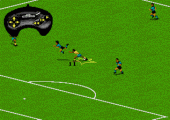
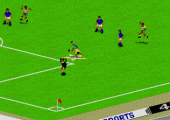
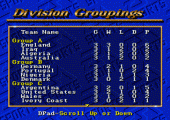
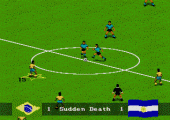
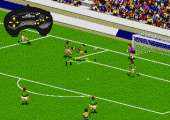
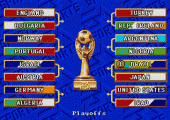
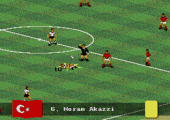
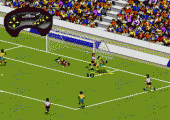

Recent Comments